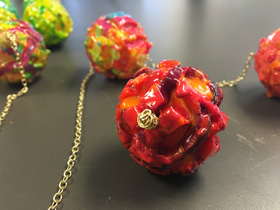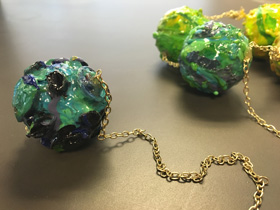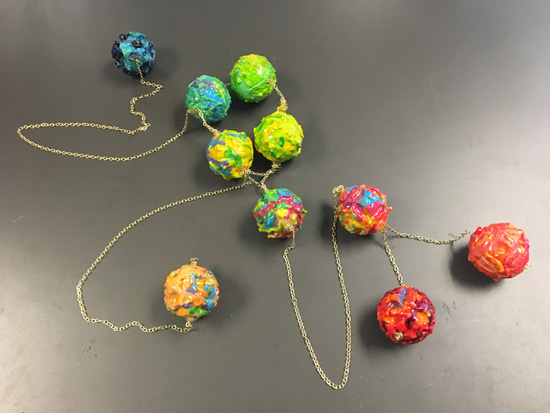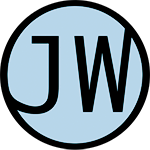Visualizing
Genetic Variation
as 3D Models
Genetic Variation
as 3D Models
Jennifer Weiler and Kat Fowler
This project aimed to convert two-dimensional phylogenetic networks into three dimensional models, with the eventual aim of using those three-dimensional models as instructional aides to help viewers understand genetic relation between subspecies. Phylogenetic networks are a visualized hypothesis about the evolutionary distance between a set of sequences. As such, 3D models of phylogenetic networks could be appropriate aids for explaining evolutionary distance.
Our 2D visualization was created by analysing evolutionary distance between sub-species. Evolutionary distance is defined as the number of substitutions per site between two homologous genes or DNA sequences. The distance can be calculated using either DNA or protein sequences, but we chose to use DNA sequences because we had access to a large dataset DNA sequences available. Aligning the DNA sequences is necessary to calculate the distance between them, because programs calculate evolutionary distance by looking at the changes for a specific site. If a site is not lined up to its corollary in another sequence, the estimation of evolutionary distance will be incorrect.
The data used in this project was composed of over one thousand chimpanzee and bonobo mitochondrial DNA samples. Specifically, the samples comprised the first hyper-variable region (HVR1) in the chimp/bonobo mitochondrial genome. The hyper-variable region is often used in phylogenetic studies using mitochondrial data, because it is well-characterized and inexpensive to sequence. The samples were mined from publicly available data in Genbank and were parsed into smaller subspecies-specific datasets, so that there were more options when choosing which networks to 3D print for models.
Our 2D visualization was created by analysing evolutionary distance between sub-species. Evolutionary distance is defined as the number of substitutions per site between two homologous genes or DNA sequences. The distance can be calculated using either DNA or protein sequences, but we chose to use DNA sequences because we had access to a large dataset DNA sequences available. Aligning the DNA sequences is necessary to calculate the distance between them, because programs calculate evolutionary distance by looking at the changes for a specific site. If a site is not lined up to its corollary in another sequence, the estimation of evolutionary distance will be incorrect.
The data used in this project was composed of over one thousand chimpanzee and bonobo mitochondrial DNA samples. Specifically, the samples comprised the first hyper-variable region (HVR1) in the chimp/bonobo mitochondrial genome. The hyper-variable region is often used in phylogenetic studies using mitochondrial data, because it is well-characterized and inexpensive to sequence. The samples were mined from publicly available data in Genbank and were parsed into smaller subspecies-specific datasets, so that there were more options when choosing which networks to 3D print for models.
Generating 3D Models of System
Using Processing, we created two separate approaches to turn the 2D data into 3D structures. For the more complicated designs, which were composed of dozens or hundreds of nodes, the 3D version was generated by representing the circles as orbs and the lines connecting them as cylinders. The result was an .obj file that could be viewed in 3D. In addition, in order to give the resulting sculpture depth, we added a randomization to the z-axis position of the orbs. This way, the sculpture had a third dimension, since all the orbs were not on the same x-y plane. However, we also insured that the total distance between the orbs did not change, so that the model would still be an accurate visual representation of the genetic distances between the sub-species represented.
Beyond creating a 3D simulation, we wanted to give viewers a chance to interact with the work as a physical presence. The efficacy of concrete representations in improving learning outcomes is well-studied in chemistry and anatomy education. The same studies indicate that physical 3D models are the most efficacious concrete representation, compared to computerized 3D-like representations. Overall, learners absorbed the same material when presented with physical and computerized models, but physical models improved retention and had secondary learning benefits like improving spatial awareness.
The use of concrete representations is less well-studied in biology education. The few studies that have pursued this topic suggest that concrete representations are more effective than 2D schematics, and that a mix of computerized and physical 3D models improved learning outcomes for biochemistry students. This project does not directly address the gap in the literature regarding concrete representations in biological education. However, it produced 3D physical models that can be used in future research to determine whether using a 3D physical model improves viewers' understanding of evolutionary distance.
Beyond creating a 3D simulation, we wanted to give viewers a chance to interact with the work as a physical presence. The efficacy of concrete representations in improving learning outcomes is well-studied in chemistry and anatomy education. The same studies indicate that physical 3D models are the most efficacious concrete representation, compared to computerized 3D-like representations. Overall, learners absorbed the same material when presented with physical and computerized models, but physical models improved retention and had secondary learning benefits like improving spatial awareness.
The use of concrete representations is less well-studied in biology education. The few studies that have pursued this topic suggest that concrete representations are more effective than 2D schematics, and that a mix of computerized and physical 3D models improved learning outcomes for biochemistry students. This project does not directly address the gap in the literature regarding concrete representations in biological education. However, it produced 3D physical models that can be used in future research to determine whether using a 3D physical model improves viewers' understanding of evolutionary distance.
Left: original 2D model.
Right: 3D generated model.
Bottom: 3D printed model.
Right: 3D generated model.
Bottom: 3D printed model.
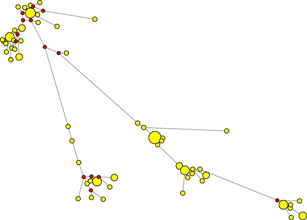

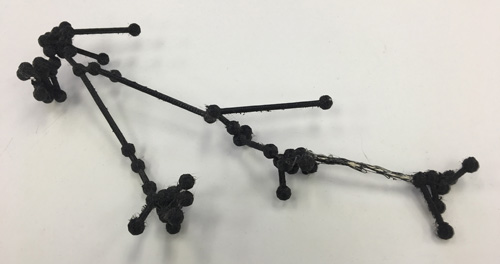
Generating Distinct 3D Orbs
As an alternative means of generating 3D models, for the structures representing only a few nodes, we wanted to find a way to creatively make each node visually distinct. Since our 3D printing abilities precluded the use of color, which had been used to distinguish nodes in the 2D representation, we contemplated alternative means of visually representing the genetic variations. To do this, we looked at the relations of each of the nodes in the structure and designed bas-relief surface details for each one based on the designs of the nodes surrounding it. The goal of this was that a viewer could visually see how the different nodes were related just by looking at their surface details.
3D orbs designed to relate to each other based on their relation in the genetic map. Below: Original map and 3D prints.

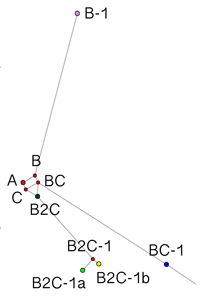
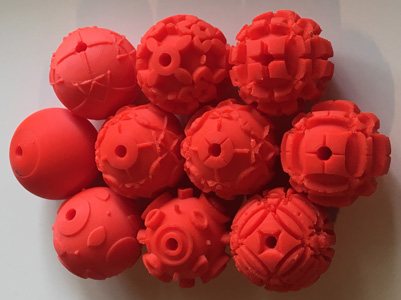
In addition to using the 3D prints as in-class educational tools, we were interested in using them to as a basis for publically displayed sculptures. To do so, we used the 3D prints as a starting point for both a bronze sculpture and an experimental tactile display.
Creating a metal sculpture is a long and labor-intensive process, which also contains risk of human error, unlike the automated manufacturing of mass production or 3D printing. However, the construction of this type of sculpture also allows individual artistic technique to be used as part of the creation process, combining both the precision of computer-based manufacturing and the human ingenuity of traditional sculpture casting.
Creating a metal sculpture is a long and labor-intensive process, which also contains risk of human error, unlike the automated manufacturing of mass production or 3D printing. However, the construction of this type of sculpture also allows individual artistic technique to be used as part of the creation process, combining both the precision of computer-based manufacturing and the human ingenuity of traditional sculpture casting.
Bronze sculpture representing genetic variety in chimpanzee and bonobo populations.

After making the silicone molds for bronze casting, the original 3D prints were still intact. Because they were still available, we decided to experiment with creating a low-cost, visually unique display that observers could tactilely interact with.
In order to prevent the crayon coating from rubbing off, we covered the prints in a layer of polyurethane spray which would both protect the pieces and give them a glossy finish. The pieces were then connected with thin jewelry chains. We chose to use a flexible material like chains as opposed to a firm material because we wanted individuals to have the option to pick up and observe individual pieces of the map without having to move the entire piece.
In order to prevent the crayon coating from rubbing off, we covered the prints in a layer of polyurethane spray which would both protect the pieces and give them a glossy finish. The pieces were then connected with thin jewelry chains. We chose to use a flexible material like chains as opposed to a firm material because we wanted individuals to have the option to pick up and observe individual pieces of the map without having to move the entire piece.
3D print and melted crayon sculpture.
